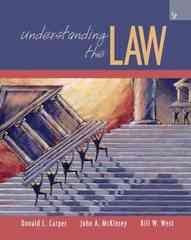Question
QUESTION 1 In the 2009 recession, the U.S. unemployment rate rose to double digits. Most of that unemployment is considered by economists to be a,
QUESTION 1
In the 2009 recession, the U.S. unemployment rate rose to double digits. Most of that unemployment is considered by economists to be
a, seasonal unemployment
b, structural unemployment
c, frictional unemployment
d, cyclical unemployment
e, full employment rate of unemployment
QUESTION 2
Suppose that COVID19 caused so much job loss that after four months people gave up looking for work because of their lack of success at finding a job. What would happen to the unemployment rate after people gave up?
A. It would increase.
B. It would fall.
C. It would not change.
D. The effect cannot be predicted.
QUESTION 3
The natural rate of unemployment is:
a, set by Congress
b, set by The Federal Reserve
c, the rate of unemployment at which an economy operates efficiently.
d, the inflation-adjusted rate of unemployment.
e, zero percent.
QUESTION 4
When the economy slows, unemployment usually increases (at least in the short run). Why is this?
a, More immigrants will decide to enter the country.
b, Wages fall less quickly than most prices in the economy.
c, Business will replace workers with machines.
d, all of the above
QUESTION 5
"Sylvia decides to attend college fulltime, instead of working. Sylvia"
A. is part of the labor force and what economists call a discouraged worker.
B. is part of the labor force and considered frictionally unemployed.
C. is part of the labor force and considered structurally unemployed.
D. is part of the labor force and considered seasonally unemployed.
Step by Step Solution
There are 3 Steps involved in it
Step: 1

Get Instant Access to Expert-Tailored Solutions
See step-by-step solutions with expert insights and AI powered tools for academic success
Step: 2

Step: 3

Ace Your Homework with AI
Get the answers you need in no time with our AI-driven, step-by-step assistance
Get Started


